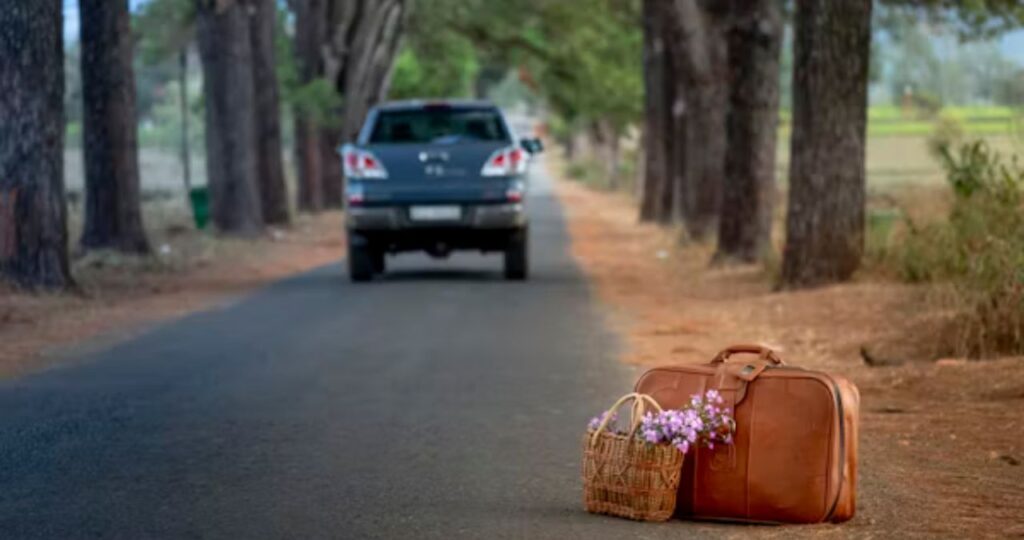Transporting goods by car is a common activity that requires a careful balance of efficiency, safety, and organization. Whether it’s moving household items, delivering business products, or simply carrying personal belongings, understanding the best practices for vehicle transportation is crucial. Enter Rena Monrovia, a concept that encapsulates the art and science of transporting items by car with precision, care, and responsibility.
But what exactly does Rena Monrovia signify, and how does it apply when you transport something by car? In this article, we will explore the meaning behind Rena Monrovia, its importance in car-based logistics, and best practices to ensure a smooth, safe, and effective transport process.
What is Rena Monrovia?
Rena Monrovia is a symbolic reference that emphasizes the discipline, strategy, and responsibility involved in transporting items by car. Though not a mainstream term, it has emerged in discussions around mindful and organized transportation practices. The name Rena Monrovia represents a thoughtful approach to ensuring that every transport task—whether small or large—is executed with utmost care and attention to detail.
The core philosophy of Rena Monrovia revolves around:
-
Planning before action.
-
Securing items to prevent damage.
-
Optimizing space without compromising safety.
-
Understanding legal and environmental considerations.
In essence, it’s not just about moving items from point A to B; it’s about doing it the right way.
The Importance of Proper Transportation by Car
Transporting items by car may seem straightforward, but there are several factors that can lead to inefficiencies or even accidents if not properly addressed. Here’s why adopting a Rena Monrovia mindset is essential:
1. Ensuring Safety for All
Improperly loaded or unsecured items can shift during transit, posing risks not just to the driver and passengers but also to other road users. Adhering to safe loading practices ensures a hazard-free journey.
2. Protecting Your Belongings
Scratched, broken, or damaged goods often result from negligence in packaging or securing items. A structured approach, as advocated by Rena Monrovia, minimizes such risks.
3. Maximizing Space Efficiency
Understanding how to organize and stack items efficiently ensures you make the most of your vehicle’s cargo capacity without overloading it.
4. Legal Compliance
Different regions have laws regarding maximum load limits, visibility obstruction, and proper securing of transported goods. Following Rena Monrovia’s principles helps maintain compliance and avoid fines.
5. Environmental Responsibility
Minimizing trips through efficient packing reduces fuel consumption, thereby lowering your carbon footprint—a key aspect of responsible transportation.
Key Principles of Rena Monrovia: Best Practices for Car Transport
1. Plan Your Transport Strategically
Before loading anything into your car, assess:
-
The size and weight of the items.
-
The available space in your vehicle.
-
The route you’ll be taking and potential road conditions.
Proper planning ensures you’re not caught off-guard and can adapt the transport method to the nature of the cargo.
2. Use Appropriate Packing Materials
-
Cushion fragile items using bubble wrap, blankets, or foam padding.
-
Use sturdy boxes for stackable items.
-
Seal boxes properly to prevent contents from spilling.
3. Secure Items Effectively
An essential Rena Monrovia practice is ensuring items are immobile during transport:
-
Use bungee cords, ratchet straps, or cargo nets to tie down items.
-
Place heavier items at the bottom and closer to the vehicle’s center of gravity.
-
Ensure that items do not block your rearview mirror visibility.
4. Don’t Overload the Vehicle
Every vehicle has a maximum load capacity—exceeding it can strain the suspension, reduce braking efficiency, and increase the risk of accidents. Always check your car’s manual for load limits.
5. Distribute Weight Evenly
Uneven weight distribution can cause your vehicle to sway or affect steering control. Spread items evenly across the cargo area, balancing the load on both sides.
6. Drive Mindfully
When transporting items:
-
Accelerate gradually to avoid sudden shifts in cargo.
-
Take turns slowly.
-
Maintain safe distances as stopping distances may increase with added weight.
7. Check Local Transportation Laws
Some regions have regulations on protruding items (like furniture or ladders sticking out of a trunk) that require flags, reflectors, or specific warnings. Understanding these rules is crucial to avoid penalties.
Practical Applications of Rena Monrovia in Everyday Scenarios
1. Moving to a New Home
Transporting personal belongings during a move is one of the most common scenarios where Rena Monrovia principles apply. Efficient packing, securing fragile items, and space optimization make a significant difference in how smooth the move goes.
2. Small Business Deliveries
For small business owners delivering products (furniture, decor, floral arrangements, etc.), adhering to proper transportation protocols ensures items reach clients in pristine condition, enhancing brand reliability.
3. Event Setups
Photographers, decorators, or caterers often need to transport equipment or supplies to event locations. Organizing these materials efficiently prevents last-minute mishaps and ensures a professional presentation.
4. DIY Home Projects
When purchasing materials like wood, tiles, or tools for DIY projects, securing them properly in your car prevents damage to both the goods and your vehicle’s interior.
5. Outdoor Adventures
Transporting camping gear, bicycles, kayaks, or surfboards requires specific securing techniques to ensure safety on highways and rough terrains. Using roof racks and tie-down straps correctly aligns with Rena Monrovia’s approach.
Mistakes to Avoid When Transporting Items by Car
Even with the best intentions, there are common pitfalls to be wary of:
-
Overloading a vehicle beyond its capacity.
-
Neglecting to secure items, allowing them to shift during transit.
-
Blocking driver visibility with piled-up cargo.
-
Ignoring legal requirements for oversized or protruding items.
-
Failing to distribute weight evenly, leading to poor vehicle handling.
Avoiding these mistakes is at the heart of practicing Rena Monrovia principles.
The Future of Car Transportation: Rena Monrovia in Smart Vehicles
As we move towards smarter transportation systems, the principles behind Rena Monrovia are being embedded into automated cargo sensors, AI-driven load management systems, and intelligent packing algorithms. Self-driving vehicles and advanced cargo delivery platforms are leveraging these principles to ensure safe and efficient transport.
For individual car owners, future cars may come equipped with built-in systems that analyze load distribution and alert drivers to unsafe conditions, bringing Rena Monrovia’s meticulous approach into everyday technology.
Conclusion: Rena Monrovia – More than Just Transporting Items
Rena Monrovia isn’t just a term—it’s a philosophy of mindful transportation. It represents a shift from casual loading habits to a disciplined, thoughtful approach that prioritizes safety, efficiency, and responsibility.
Whether you’re a homeowner moving furniture, a business owner delivering products, or an adventurer gearing up for a trip, adopting Rena Monrovia’s best practices ensures that your transportation efforts are successful and stress-free. As vehicles and transport needs evolve, the foundational principles of Rena Monrovia remain timeless—reminding us that how we move things is just as important as where we move them to.






